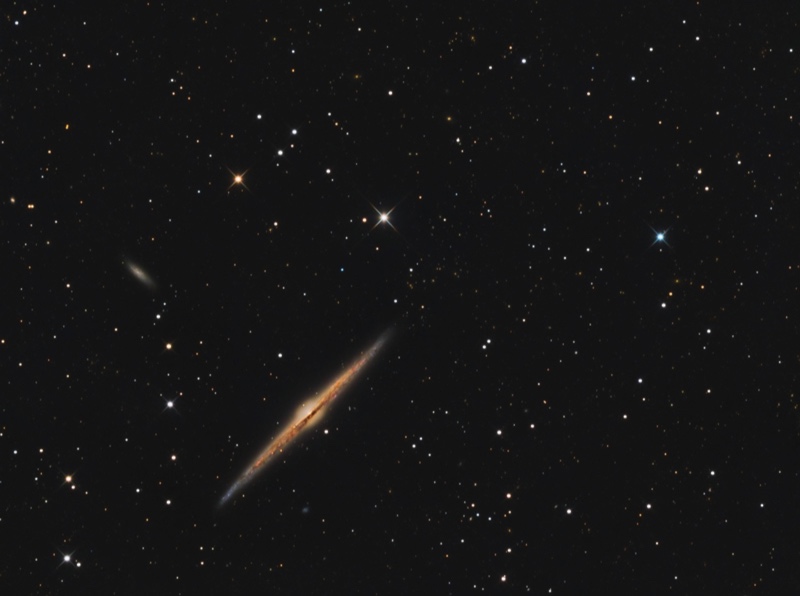
NGC 4565
About this object
NGC 4565 (also known as the Needle Galaxy or Caldwell 38) is an edge-on spiral galaxy about 30 to 50 million light-years away in the constellation Coma Berenices. The 10th magnitude galaxy sits perpendicular to our own Milky Way galaxy and is almost directly above the North Galactic Pole (in the same way Polaris is located above the Earth's North Pole). It is known as the Needle Galaxy for its narrow profile. First spotted in 1785 by Sir William Herschel (1738-1822), this is one of the most famous examples of an edge-on spiral galaxy. "Visible through a small telescope, some sky enthusiasts consider NGC 4565 to be a prominent celestial masterpiece Messier missed." Much speculation exists in the literature as to the nature of the central bulge. In the absence of clear-cut dynamical data on the motions of stars in the bulge, the photometric data alone cannot adjudge among various options put forth. However, its exponential shape suggests that it is a barred spiral galaxy.
NGC 4565 (also known as the Needle Galaxy or Caldwell 38) is an edge-on spiral galaxy about 30 to 50 million light-years away in the constellation Coma Berenices. The 10th magnitude galaxy sits perpendicular to our own Milky Way galaxy and is almost directly above the North Galactic Pole (in the same way Polaris is located above the Earth's North Pole). It is known as the Needle Galaxy for its narrow profile. First spotted in 1785 by Sir William Herschel (1738-1822), this is one of the most famous examples of an edge-on spiral galaxy. "Visible through a small telescope, some sky enthusiasts consider NGC 4565 to be a prominent celestial masterpiece Messier missed." Much speculation exists in the literature as to the nature of the central bulge. In the absence of clear-cut dynamical data on the motions of stars in the bulge, the photometric data alone cannot adjudge among various options put forth. However, its exponential shape suggests that it is a barred spiral galaxy.
Image Details
Optics: Carbon Fiber Astrograph @ f5
Mount: Mountain Instruments MI 250
Camera: QSI 583
Filters: Astrodon 31mm LRGB filters
Exposure Time: LRGB 365:60:60:60
Camera/Mount control: Maxim DL 4.56, CCD commander
Location: Stark Bayou Observatory, Ocean Springs, MS
Date: March 2011
Optics: Carbon Fiber Astrograph @ f5
Mount: Mountain Instruments MI 250
Camera: QSI 583
Filters: Astrodon 31mm LRGB filters
Exposure Time: LRGB 365:60:60:60
Camera/Mount control: Maxim DL 4.56, CCD commander
Location: Stark Bayou Observatory, Ocean Springs, MS
Date: March 2011



